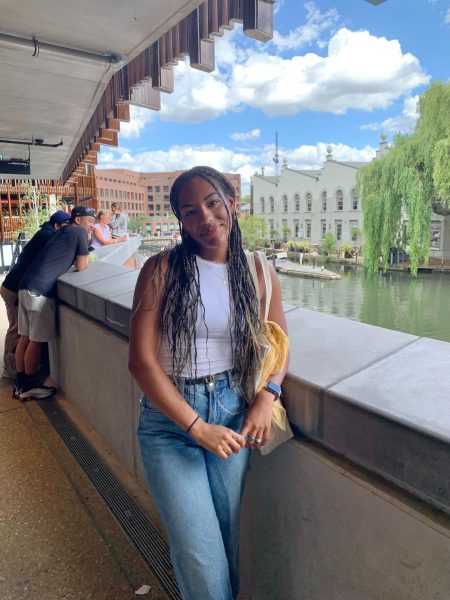One of my favorite pastimes, of which I am not exactly proud, is scrolling aimlessly on TikTok. Unfortunately, these scrolls have not been as enjoyable as they once were. This is because my “For You” page has been flooded with “What I eat in a day” videos.
These trending videos consist of many “health and wellness” creators documenting what they eat throughout the day, and a majority of these creators are women. I put “health and wellness” in quotes because more often than not, their daily calorie intakes are far from healthy. The videos begin with the creator body checking their empty stomach. Body checking is a common behavior that comes with body dysmorphia in which an individual constantly seeks information about their body by checking it in the mirror, constantly weighing or touching parts of their body to try and figure out what to “fix.”
On TikTok, the creators lift their shirts at the start of the video and show the viewers their bodies from different angles. Often the bodies depicted are society’s depiction of an “ideal” body type, whether it be a woman with a flat stomach or a man with washboard abs. These body standards are unrealistic for a majority of people. Following the body check is often an extremely light breakfast followed by an intense workout. The rest of their meals consist of unhealthy portions of rice cakes, apples and protein bars, falling far short of the recommended 2,000 calories per day for women.
Many people have TikTok, and about 57% of users are female and 25% of all users are ages 10-19. This means that a large portion of these videos are landing on the “For You” pages of adolescent girls and boys, both of whom are highly susceptible to eating disorders and body image issues. By the age of 14, 60% to 70% of girls begin trying to lose weight, and regardless of gender, about 77% of children and adolescents as young as 12 dislike their bodies. As a young girl struggling with body dysmorphia and issues surrounding food, the first place I would look for “help” with losing weight I had no business losing was social media. The Pinterest diets and Instagram workouts were what I sought to reach this “ideal” body type I convinced myself was necessary.
Now that children, especially girls, have social media at a much younger age, they seek a way to “fix” their weight by watching these harmful videos. A young girl or boy who is already dealing with body image issues and is at a sensitive point in life should not be exposed to what an adult eats in a day to “remain lean,” “stay shredded” or “keep off weight.” These little comparisons often domino into larger, more harmful habits that lead to disordered eating and even more severe body image issues.
When I was younger and my body dysmorphia began to worsen with the help of social media, all I did was compare. I compared every detail of my body to the images of women used under articles titled “How to Lose 10 Pounds in a Week.” The only reasoning I could come up with at that time to explain the differences was centered around what I ate and everything I ate wrong. Genetics never crossed my mind, and the idea that everybody is different and holds weight differently never crossed my mind.
I focused on how I could change what I was eating, and this only led to years and years of food anxiety. As I scroll on TikTok now and come across these videos, that way of thinking begins to make its way back. I find myself feeling bad for eating a bagel for breakfast instead of a bowl of fruit or stressing that I have already eaten too many calories and need to begin restricting myself to fix it. The comparisons become so easy to make.
Nonetheless, creators who document what they eat for the greater good deserve some recognition. I have seen a handful who have shared what they eat as they recover from an eating disorder. Some creators post what they eat in response to the common unhealthy ones and let viewers know that eating in that way is not realistic or healthy. Even nutritionists will show what a healthy day of eating looks like and in their voiceovers mention that food is fuel and restriction is never a healthy habit. While the thought behind these videos is great and does aid many people, the bottom line is that comparison is inevitable.
Many creators will argue that since it is their platform, they can post what they want, and if a certain viewer dislikes it, they can block their account. While that is true, they are not addressing the fact that these young girls and boys and even some older viewers struggling with body image will never block something they view as the “guideline” to a dream body. They will continue to consume the media and the algorithm will draw them to videos just like it.
It is important that one of the most widely used social media apps doesn’t contribute to more harm that adolescents and the general public will succumb to. Since eating disorders are on a worldwide rise, those who label themselves as “health and wellness” creators should steer from creating videos that leave room for comparison and instead share healthy and nutrient-dense snacks or workout videos. Documenting an entire day of eating is simply not necessary and only encourages an already vulnerable age group to think even more about the calories they are consuming and the numbers on their scales.
Grace Harris has a passion for social justice and advocacy. Her email is always open to more ideas — [email protected]




